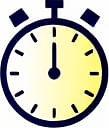Solutions for Decision Fatigue
 by Max Miller
by Max Miller
Decision fatigue drains mental energy through constant choices, affecting productivity for professionals and students. This article explores practical strategies like time blocking and hyperfocus to manage it effectively, offering tips to regain control and boost efficiency.

Many people face the challenge of decision fatigue, a state where making choices becomes exhausting after prolonged mental effort. This can lead to poor decisions or avoidance of choices altogether. To address this, adopting structured routines proves helpful. For instance, time blocking allocates specific periods for tasks, reducing the need for constant decisions.
In daily life, simple habits make a difference. Start by identifying high-decision periods, such as mornings when planning the day. By setting aside fixed times for emails or meetings, individuals create predictability. This approach minimizes cognitive load and allows focus on important work.
Another key strategy involves hyperfocus, a technique where attention narrows to one task at a time. Through this method, distractions fade, and productivity rises. For busy professionals, practicing hyperfocus means selecting a single goal for a set period, like an hour, without interruptions.
Consider how routines build over time. A student might begin with a daily schedule that includes breaks for rest. These pauses refresh the mind and prevent overload. Over weeks, this consistency reduces the mental toll of decisions, leading to better outcomes.
Benefits of Time Blocking
Time blocking offers clear advantages. It organizes the day into segments, each dedicated to specific activities. For example, mornings could focus on creative work, while afternoons handle administrative tasks. This structure eliminates guesswork and conserves energy.
Lists enhance this process. Create a simple checklist of daily priorities. By ticking off items in blocked slots, progress feels tangible. Such tools keep momentum steady and ward off fatigue.
Integrating Hyperfocus Techniques
Hyperfocus builds on basic concentration. Begin with short sessions, gradually increasing duration as comfort grows. During these periods, eliminate external factors like notifications. The result is deeper engagement and higher quality output.
For students, hyperfocus aids study sessions. Dedicate blocks to subjects, ensuring full immersion. This not only improves retention but also makes learning more efficient.
Practical Tips for Implementation
Start small to see changes. Choose one day to test time blocking, perhaps scheduling work in 90-minute intervals with short rests. Track energy levels to adjust as needed.
Delegation plays a role too. Assign minor decisions to others when possible, freeing mental space for critical choices. In a team setting, this means sharing responsibilities to distribute the load.
Maintaining physical health supports these strategies. Regular exercise and adequate sleep restore mental clarity, making it easier to handle decisions. Combine this with reflective practices, like evening reviews of the day, to refine approaches.
Overcoming Common Obstacles
Some face resistance when adopting new methods. If sticking to a schedule feels rigid, introduce flexibility. Allow buffer time between blocks for unexpected tasks. This adaptation ensures the system works without causing stress.
Motivation comes from tracking improvements. Note how these techniques reduce fatigue over time, perhaps through a journal of daily energy. Seeing progress encourages continued effort.
In conclusion, addressing decision fatigue through practical steps like time blocking and hyperfocus leads to lasting gains. By applying these ideas consistently, individuals regain control, enhance productivity, and achieve more with less effort.
